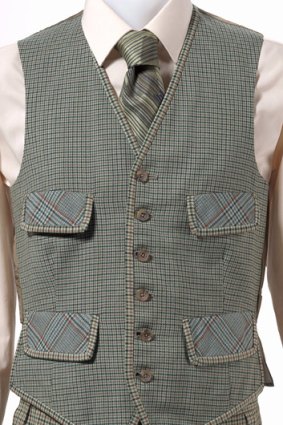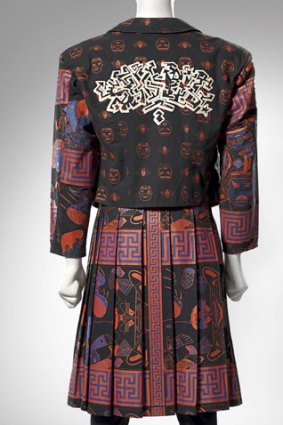By Robert Nelson
When it comes to the design of their clothes, men are either clones or clowns.
Fashion for males is almost a contradiction in terms. At best, men recognise a canon of sharpness, neat combinations of garments and footwear rather than interesting designs. A shirt with a cheerful print or a tie with an image is about as risky as most men will dare try on.

Tailor Tommy Nutter
Female fashion, meanwhile, is imaginative and aesthetically rich. The sculptural potential of dresses, skirts, blouses, coats and accessories such as handbags is constantly realised afresh in fabulous designs of great sophistication.
The sartorial repertoire for men is so impoverished that dignifying it with the word "design" seems like hyperbole. There are certainly designers who want to create interesting clothes for men. The problem is that there are so few men who want to wear interesting clothes and so couturiers design for a provisional male who will be emancipated from the square stereotypes we know so well, devoid of colour or whim.

Sara Thorn and Bruce Slorach
A beautiful exhibition at the NGV, ManStyle, concentrates on designers who have tried to break the conservative mould. Spread over Federation Square and St Kilda Road, the exhibition has fine examples of exuberant clothing for men, albeit a certain type of man who doesn't mind being considered a peacock, a fop, a clown or deviant. Even a standard suit done in a lavish pattern, such as WORLD's Sanderson suit, would be regarded as exhibitionist.
The great strength of ManStyle lies in something that only a gallery with the resources of the NGV can achieve: it provides a history of male attire that reminds us just how flamboyant male clothing was before modernism. If you could afford it, you wore stockings, floral embroidery, brocade, pleats, slashes, ornamental lace and boofy sleeves. Nothing among the outrageous contemporary designers is quite so out-there as an English Waistcoat from 1845.
This extroverted historical backdrop contextualises the efforts of contemporary designers in liberating men from the bleak standards that have encased the sombre sex in a conformist uniform for a century. We can recognise that the blandness of the businessman is not at all natural but rather a historical freak, a grim anomaly in the history of design.
As functionalism and the machine aesthetic became the dogmatic principle of modernism, males had to own the look. It was necessary throughout modernism for men to appear standardised, mechanical, predictable, rational, regular: they are the responsible organisers of society. Women, meanwhile, would be encouraged to retain all the aspirations to frivolous hedonism, leggy fancies, extravagance and irrationality, because these indulgences became signs of inferiority and powerlessness.
In fact, there's nothing more irrational than a suit and tie. Try riding a bike in that stolid garb. The suit has nothing to do with reason but rather the gender stereotypes that developed during modernism, which are based on assumptions of biological determinism in sexual roles.
Women are supposed to be encoded to attract men by their looks and charm (and hence their need for striking costume).
Men, on the other hand, are configured to attract women by their power and wit. It therefore seems like fate that men forbear from colour and panache but project their masculine airs with rigid suit and shirt, kitted out with managerial authority for the institutional world.
So a new concept arose, masculinity, which only took on its contemporary meaning in the later 19th century. From then on, men would be socialised to be utterly dull in their appearance but bombastic in their behaviour. They would be denied any self-expression by means of dress and would have to impress other people by talking imposingly about all the things that they know better than anyone else.
Oh men! They're embarrassing because they're embarrassed: heterosexual men are so scared of being considered gay or narcissistic that they gird their loins with all the institutional armour that could ever efface their personality.
If only they could walk into the NGV and recognise that it doesn't have to be like this: you can have any amount of fun with hue and flounce and be man enough to enjoy the aesthetic.